Overview
A brand represents the essence of a business's identity, capturing the perceptions and experiences that consumers have with a company, product, or service. However, many founders struggle with effectively communicating this identity. Branding is not just a task; it involves strategic efforts to shape and convey that identity in a way that resonates with your audience. This can be challenging, as it requires differentiation, consistency, and an emotional connection with consumers. The implications of not achieving this can be significant, leading to lost opportunities and diminished customer loyalty.
Yet, there is hope. Successful examples like Apple and Nike show us that strong brand identities can foster deep customer loyalty and influence purchasing decisions. By learning from these leaders, you can cultivate a brand that not only stands out but also connects with your audience on a personal level.
Remember, effective branding is a journey, and you don’t have to navigate it alone. Together, we can explore the strategies that will help you create a meaningful and impactful brand.
Introduction
Understanding the essence of a brand goes far beyond mere logos or catchy slogans; it encapsulates the very identity of a business and its relationship with consumers. In a marketplace saturated with choices, many founders find themselves grappling with the challenge of differentiating their brand. This struggle isn’t just a hurdle—it’s a critical factor for survival. When brands fail to connect meaningfully with their audience, it can lead to feelings of frustration and uncertainty. As the landscape evolves, the challenge of crafting a compelling brand identity becomes even more pressing.
So, how can businesses effectively navigate this intricate journey? By focusing on the core principles of branding and fostering genuine connections, founders can ensure lasting success. Together, let’s explore how nurturing a strong brand can transform your relationship with consumers and drive loyalty.
Define Brand: Understanding the Core Concept
A label goes beyond simple names or logos; it captures what is a brand and branding, defining the essence of a business's identity and how it is perceived in the marketplace. It embodies the full spectrum of experiences and interactions that consumers have with a company, product, or service. The American Marketing Association defines product identity as a name, term, design, symbol, or any feature that sets one seller's offerings apart from others. This definition highlights the urgent need for differentiation in a crowded market.
Consider the case of Apple. It is not just recognized for its innovative products but also for the exceptional customer experience it provides—an integral part of its brand identity. This is a challenge many startup founders face: how to create a distinct identity that resonates with consumers.
At RNO1, we genuinely care about helping you navigate this journey. We emphasize a design-centered approach across every interaction, ensuring that our marketing strategies are not only visually appealing but also impactful. Our commitment to design-focused solutions shines through in our strategic rebranding of Founder's Haven, where we empower contemporary founders to achieve digital success through innovative identity concepts.
In today’s competitive landscape, knowing what is a brand and branding is crucial for fostering customer loyalty and influencing purchasing decisions. Research shows that 81% of consumers need to feel confident in a label before considering a purchase, which emphasizes what is a brand and branding as essential to crafting a strong identity. Furthermore, customers often need to see your label at least seven times before they feel ready to make a commitment, highlighting the necessity of repeated exposure in building trust. Understanding what is a brand and branding, brands that maintain consistency across various platforms are 3-4 times more likely to achieve strong visibility, reinforcing the idea that cohesive branding can significantly enhance your market presence.
We can draw inspiration from successful examples of product differentiation, such as Nike, which effectively uses emotional storytelling to connect with customers. This approach has led to a remarkable 96% increase in conversion rates, illustrating how a well-defined corporate identity not only sets a company apart but also deepens consumer engagement and loyalty, ultimately fostering sustained business growth. At RNO1, we also focus on scaling omnichannel ambassador programs, enhancing e-commerce engagement through influencer partnerships, which further solidifies our clients' market positions.
Powerful branding has the potential to transform casual followers into loyal customers who advocate for your company, reinforcing its market position. We understand the challenges you face, and we are here to support you every step of the way.
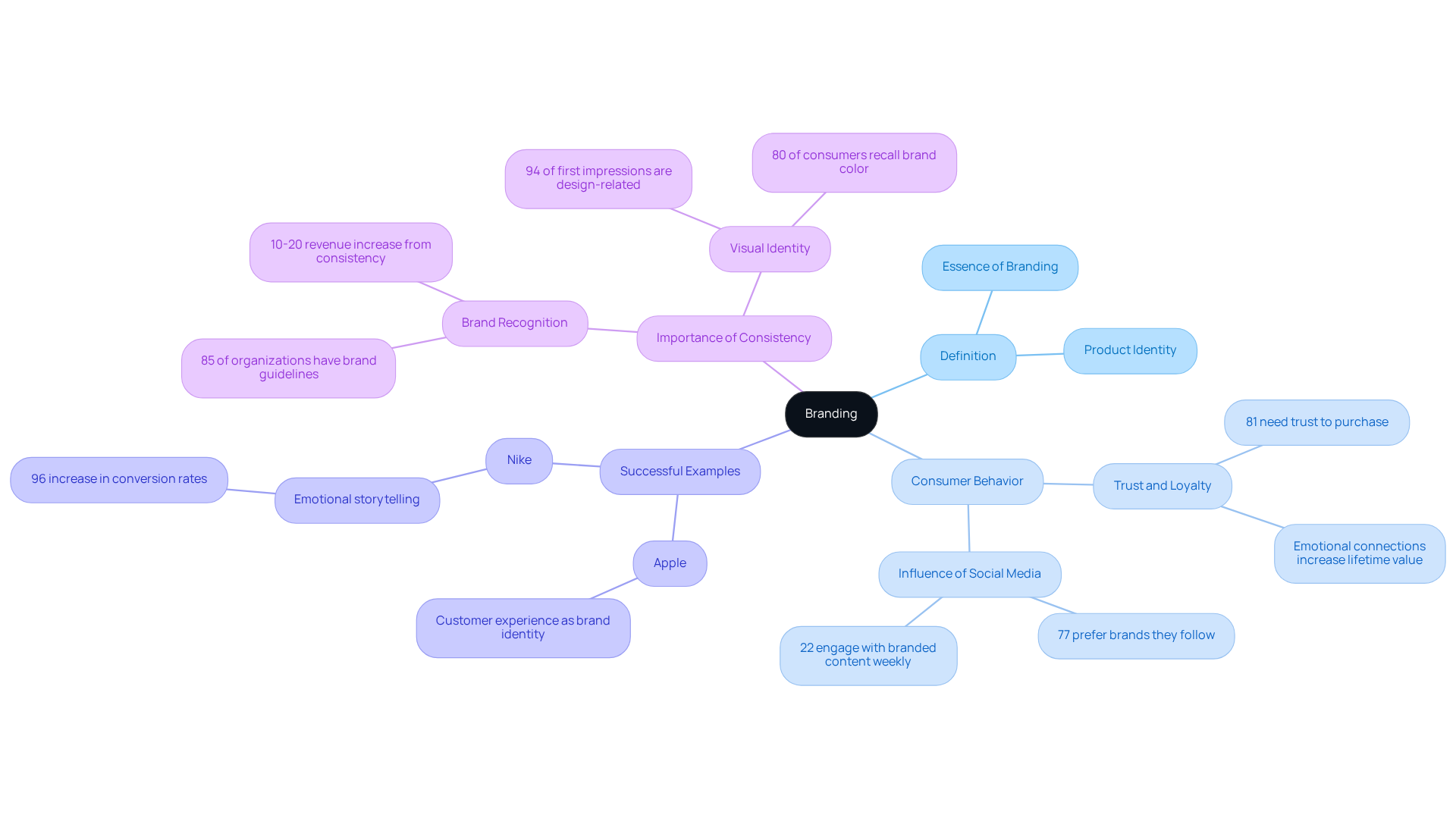
Context of Branding: Importance in Business and Consumer Relations
In today's competitive landscape, many tech startup founders face the challenge of understanding what is a brand and branding that resonates with consumers. This struggle can lead to feelings of uncertainty and frustration, as the perception of a business is crucial for building trust and loyalty—essential elements for long-term success.
Consider the strategic rebranding of Founder's Haven by RNO1; it serves as a powerful example of how a focused approach can empower modern founders to achieve digital success. By crafting an identity that truly connects with its audience, RNO1 illustrates the potential for transformation.
Similarly, brands like Nike have cultivated strong identities through consistent messaging and emotional connections, demonstrating that this relationship transcends mere transactions. It evolves into a partnership where individuals feel aligned with the values and mission of the organization. This sense of belonging is vital in fostering loyalty.
Moreover, RNO1's innovative strategies for scaling omnichannel ambassador programs, such as the Ryde initiative, highlight the importance of community engagement and influencer marketing. These approaches not only enhance e-commerce interactions but also create a supportive network for founders.
Ultimately, understanding what is a brand and branding acts as a bridge between businesses and consumers, facilitating meaningful interactions that can lead to lasting customer loyalty and advocacy. By nurturing these connections, RNO1 stands ready to support founders on their journeys, ensuring they feel empowered and understood in their pursuit of success.
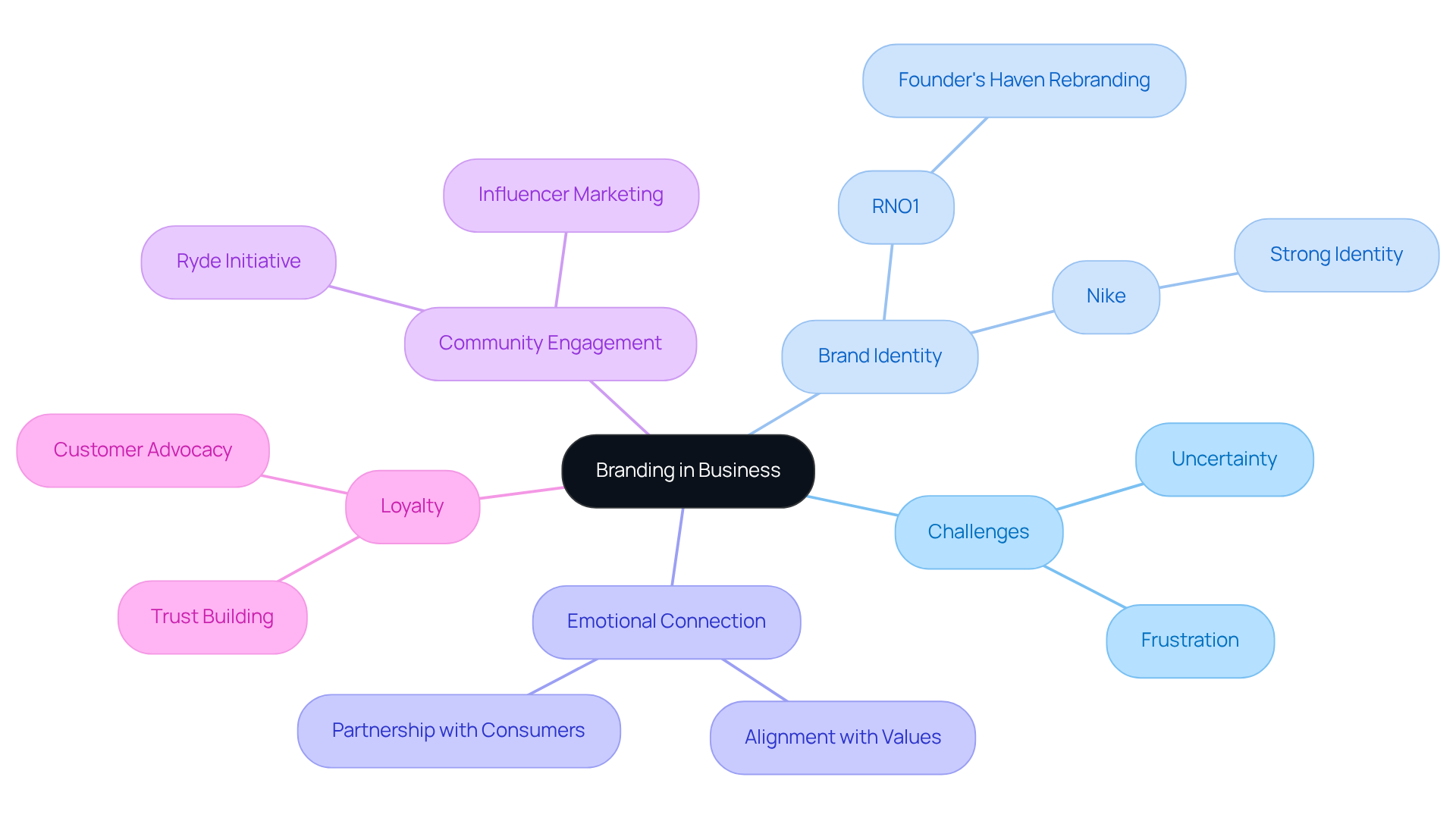
Key Elements of Branding: Attributes, Strategies, and Measurement
For tech startup founders, grasping what is a brand and branding can often feel overwhelming, as it encompasses essential components like identity, values, messaging, and experience. The challenge lies in understanding what is a brand and branding, as creating a brand identity that resonates requires visual elements such as logos, color schemes, and typography to work together to form a cohesive image that speaks to your audience. Additionally, values are not just words; they reflect the principles guiding your company's actions and decisions. When messaging effectively communicates what is a brand and branding, it conveys your identity's story and purpose, fostering a deeper connection with your audience.
Consider the implications of neglecting these aspects. Without a strong brand identity, understanding what is a brand and branding is crucial, as your message may get lost in the noise, leading to confusion and disengagement. RNO1's Ryde initiative offers a nurturing solution by focusing on expanding omnichannel ambassador programs. This approach improves e-commerce interaction through influencer collaborations, while also promoting community involvement through user-generated content initiatives and national expo messaging. By emphasizing gamification in influencer onboarding, we create a welcoming environment that encourages participation and connection.
Understanding what is a brand and branding is crucial for evaluating brand performance. Metrics such as brand awareness, customer loyalty, and engagement help determine the success of your marketing strategies. Many companies turn to surveys and social media analysis to gauge customer sentiment, allowing them to adjust their marketing efforts accordingly. This design-focused approach enhances marketability through Return On Design & Digital (RODD) strategies, ensuring that your brand not only stands out but also resonates deeply with your audience. Together, we can navigate these challenges and cultivate a brand that truly reflects your vision and values.
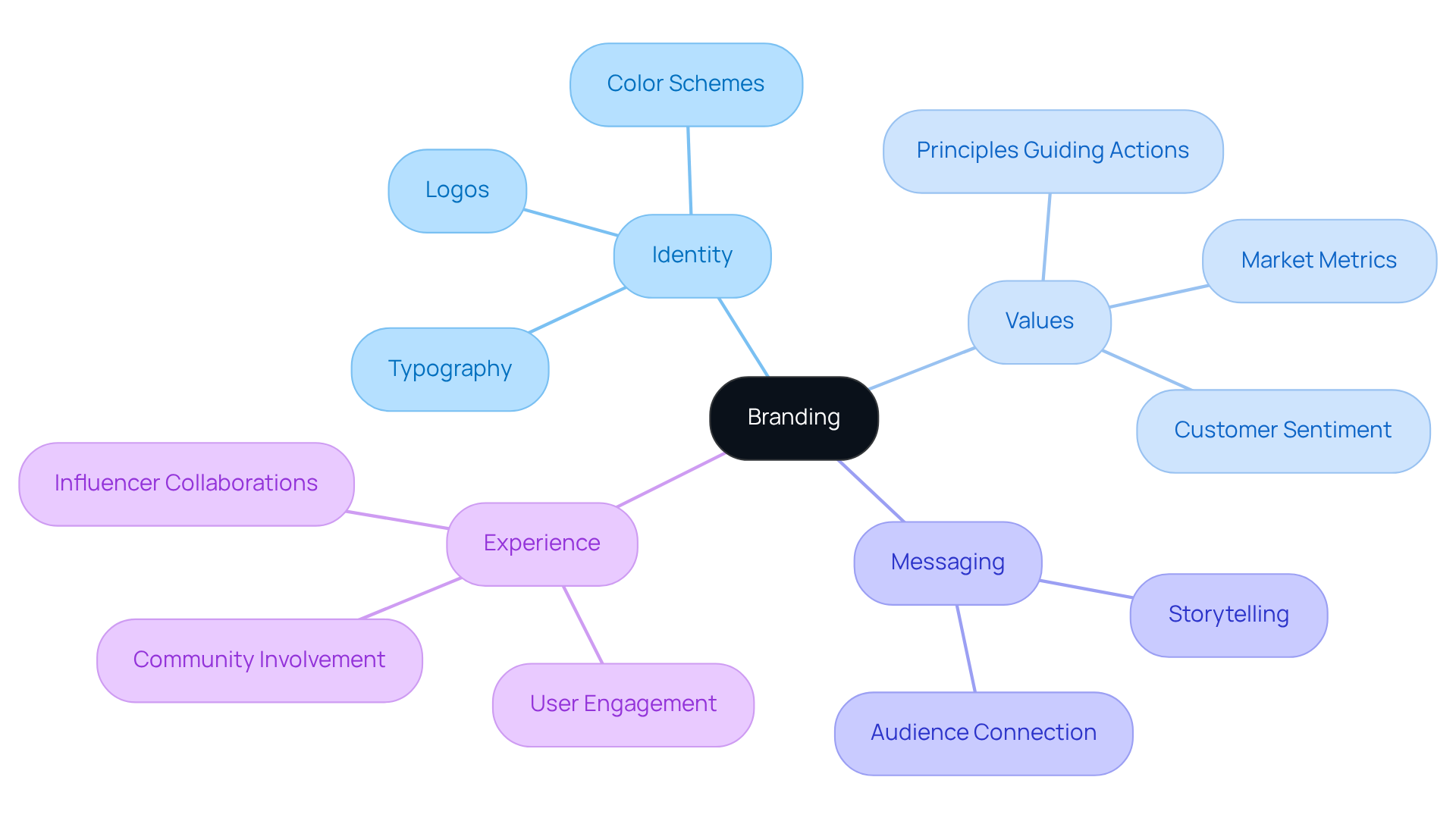
The Evolution of Branding: Historical Context and Modern Trends
Branding has undergone a remarkable transformation since its early days in the 20th century, leading to a discussion on what is a brand and branding, as it primarily aimed at differentiating products through logos and slogans. As markets grew increasingly crowded, the challenge of forging emotional connections with consumers became apparent. Today, understanding what is a brand and branding requires a holistic approach that weaves together digital experiences, social responsibility, and community engagement. This shift can feel overwhelming, especially for tech startup founders seeking to stand out. However, creative initiatives like RNO1's Ryde program illustrate what is a brand and branding by demonstrating how expanding omnichannel brand ambassador efforts can enhance e-commerce engagement and foster authentic connections with audiences.
Contemporary trends, such as personal promotion and influencer marketing, reveal the changing landscape of buyer behavior. Here, authenticity and relatability are not just buzzwords; they are essential elements for success. Companies like Glossier exemplify what is a brand and branding by harnessing the power of social media to cultivate vibrant communities around their products, showcasing the profound impact of these modern marketing strategies.
Moreover, RNO1's commitment to design-oriented solutions underscores what is a brand and branding by highlighting the importance of aesthetic influence. Every interaction is crafted to resonate with users, enhancing marketability through Return On Design & Digital (RODD) strategies. As you navigate this complex branding landscape, remember that RNO1 is here to support you, offering compassionate guidance and innovative solutions tailored to your unique journey.
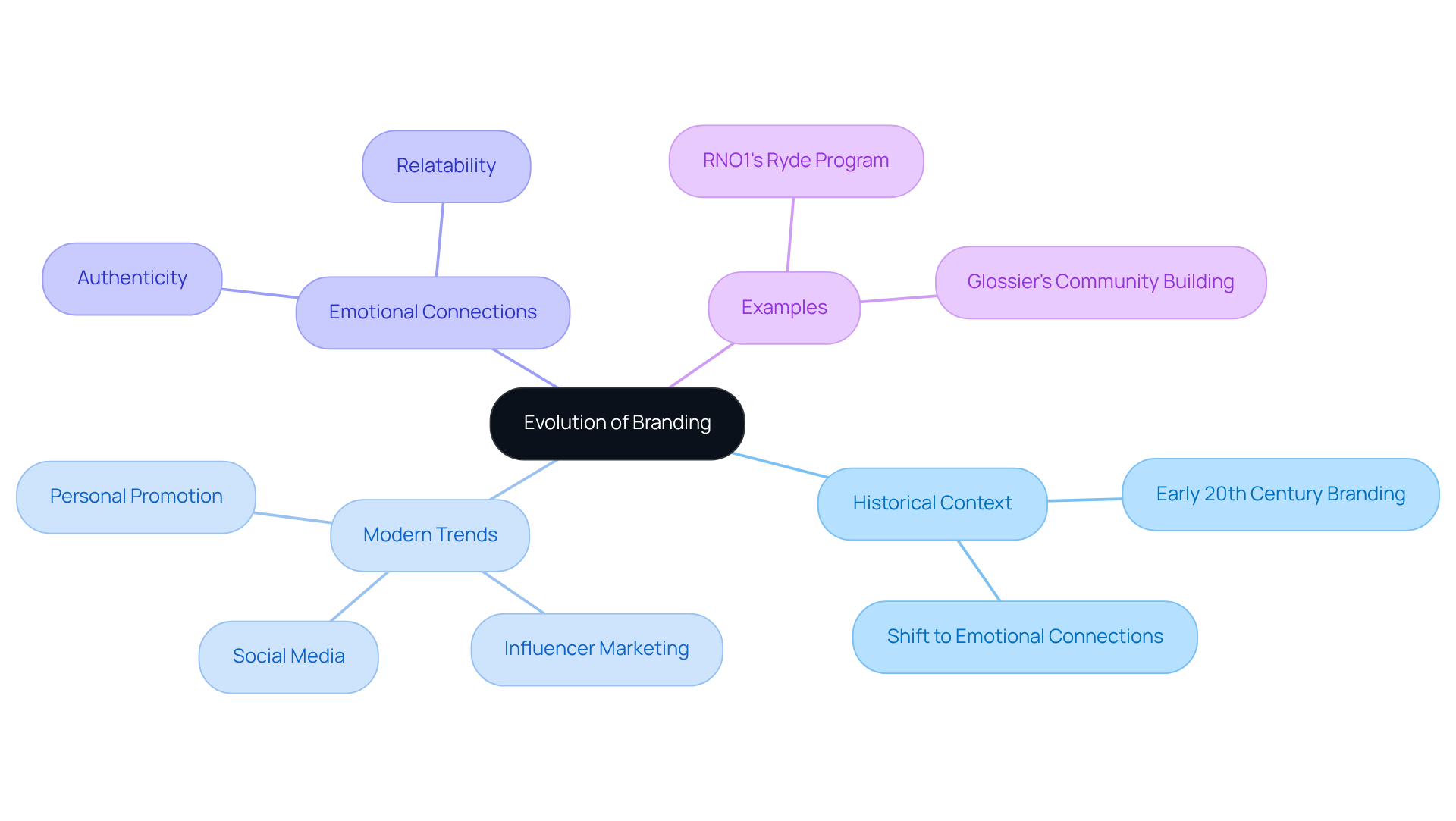
Challenges in Branding: Navigating the Complex Landscape
Brands often face significant challenges in defining what is a brand and branding, especially due to the rapid shifts in buyer preferences and technological advancements. It's concerning to note that a study reveals 60% of buyers are more likely to engage with companies that adapt to their changing needs. This underscores the necessity for businesses to remain flexible and responsive.
For many, understanding what is a brand and branding is daunting, especially since established branding strategies can swiftly become outdated. Continuous innovation and a keen awareness of market dynamics are essential. Moreover, negative publicity or customer backlash can deeply impact a brand's reputation. A case in point is United Airlines, which faced a public relations crisis that required a prompt and effective response to rebuild public trust.
To navigate these complexities, companies must actively monitor public sentiment and be ready to adjust what is a brand and branding strategies as needed. This adaptability not only aids in alleviating potential backlash but also nurtures a stronger bond with consumers, ultimately enhancing brand loyalty and engagement. Together, we can embrace these challenges and foster a more resilient brand identity.
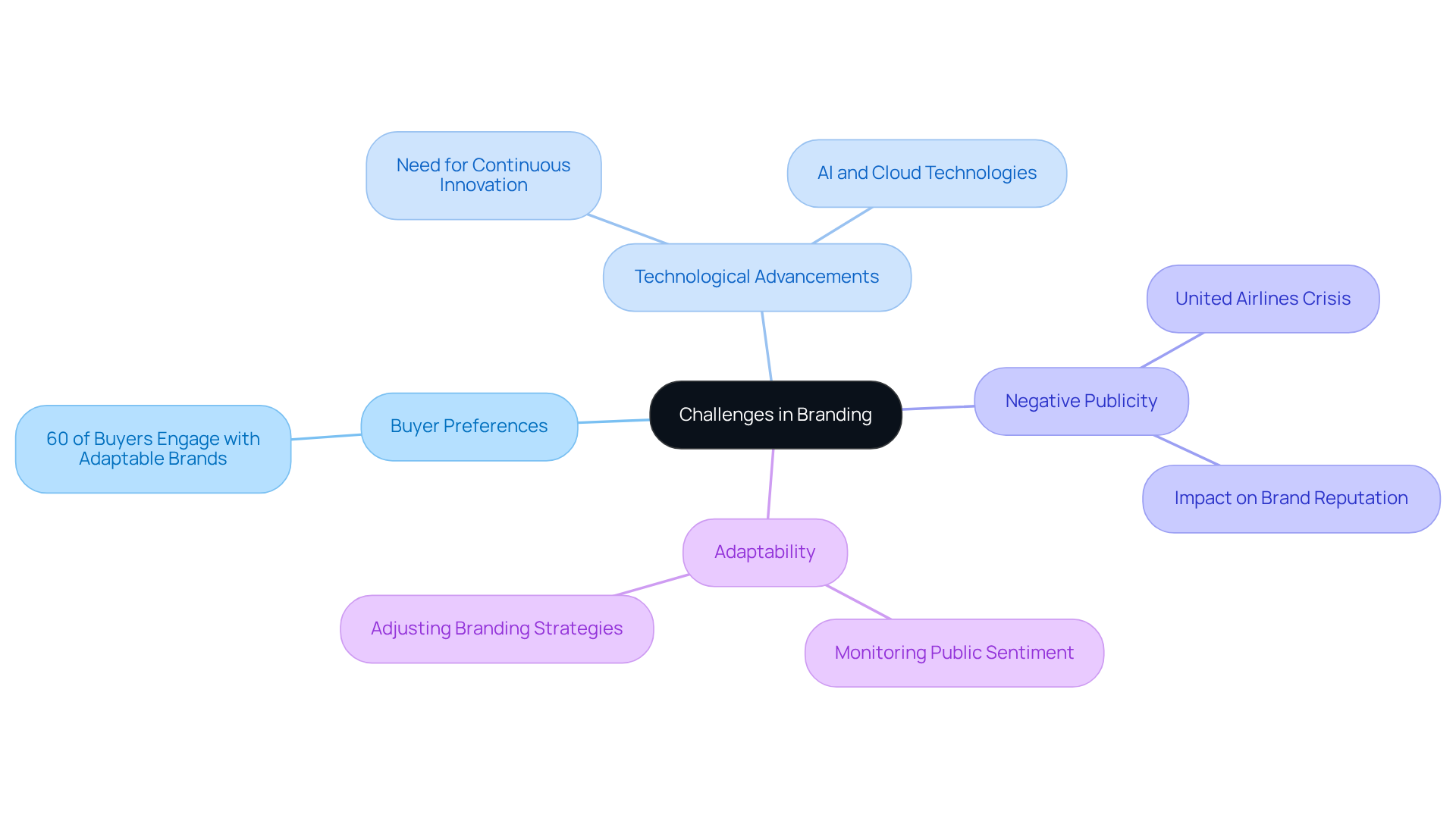
Conclusion
Understanding the intricacies of branding can feel overwhelming for any business striving to establish a unique identity in a competitive marketplace. The reality is that a brand encompasses much more than just a name or a logo; it embodies the core values, mission, and experiences that a company offers to its consumers. Recognizing what constitutes a brand and the process of branding is crucial, as these elements play a vital role in nurturing customer loyalty and influencing purchasing decisions.
Many businesses grapple with the challenge of defining their brand identity. The stories of successful companies like Apple and Nike serve as powerful reminders of how emotional connections and consistent messaging can turn casual consumers into passionate advocates. It’s essential to acknowledge the importance of community engagement and innovative strategies, including influencer partnerships, which reflect the dynamic nature of branding in today’s digital landscape. Moreover, the need for adaptability in response to ever-changing consumer preferences highlights the ongoing challenges brands face in remaining relevant.
Ultimately, the importance of branding transcends mere recognition; it is a foundational element in cultivating trust and loyalty among consumers. By adopting a design-centered approach and encouraging meaningful interactions, businesses can navigate the complexities of branding and flourish in a crowded market. The journey to create a strong brand identity may be daunting, but with the right strategies and support, it can lead to enduring success and advocacy in the marketplace. We invite you to share your experiences and challenges, as together, we can explore the path to building a brand that resonates deeply with your audience.
Frequently Asked Questions
What is the definition of a brand?
A brand is a label that captures the essence of a business's identity and how it is perceived in the marketplace. It encompasses the full spectrum of experiences and interactions that consumers have with a company, product, or service.
How does the American Marketing Association define product identity?
The American Marketing Association defines product identity as a name, term, design, symbol, or any feature that distinguishes one seller's offerings from others, highlighting the need for differentiation in a crowded market.
What role does customer experience play in brand identity?
Customer experience is integral to brand identity, as seen in the case of Apple. It is not only recognized for its innovative products but also for the exceptional customer experience it provides.
Why is understanding branding important for businesses?
Understanding branding is crucial for fostering customer loyalty and influencing purchasing decisions. Research indicates that 81% of consumers need to feel confident in a brand before considering a purchase.
How many times do customers typically need to see a brand before making a commitment?
Customers often need to see a brand at least seven times before they feel ready to make a commitment, emphasizing the necessity of repeated exposure in building trust.
What is the impact of consistent branding across platforms?
Brands that maintain consistency across various platforms are 3-4 times more likely to achieve strong visibility, reinforcing the idea that cohesive branding can significantly enhance market presence.
Can you provide an example of successful product differentiation?
Nike effectively uses emotional storytelling to connect with customers, leading to a remarkable 96% increase in conversion rates, showcasing how a well-defined corporate identity deepens consumer engagement and loyalty.
What is the significance of branding in consumer relations?
Branding acts as a bridge between businesses and consumers, facilitating meaningful interactions that can lead to lasting customer loyalty and advocacy.
How does RNO1 support founders in branding?
RNO1 supports founders by employing a design-centered approach, crafting identities that resonate with audiences, and implementing innovative strategies like scaling omnichannel ambassador programs to enhance community engagement and e-commerce interactions.




